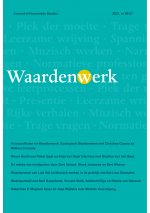
Life, Time, and Pandemic Events
Productgroep Waardenwerk 2021 86-87Omschrijving
Life is wondrous and multifarious. So are a host of nonliving planetary forces that sometimes shift rapidly. A lethal virus crossing can bring down a whole economy. Accelerated climate change can decimate entire civilizations. A massive volcano, (they are triggered more often during rapid climate change) can reshape world history for a decade. The rapid emergence of the Holocene (without human help) created vast new opportunities for human population growth. But, at least until very recently, traditions of humanist exceptionalism and sociocentrism deeply embedded in Eurocentric thought led most humanists and social scientists to treat such events as rare externalities, unentangled with the very infrastructure of the institutions they study. Political scientists, economists, and sociologists have been among the worst offenders here, though a younger cohort now strives valiantly to break that mold. I have thought in other contexts about privileges, pressures and assumptions that have helped to engender this narrowness.1 Another item can be added to the list, one helping to show how disciplinary boundaries are still sliced and diced in the academy. It is, you might say, a factor inside the academy that helped to harden boundary separations between the natural sciences, social sciences and humanities, as it also encouraged neoliberal university administrations to place that trio on a nasty hierarchy of relative significance
